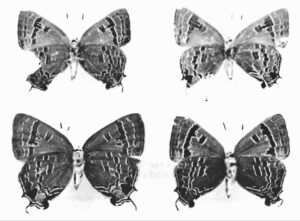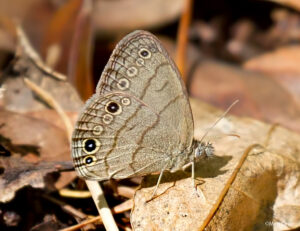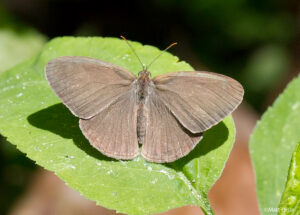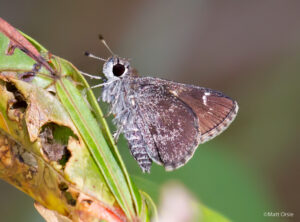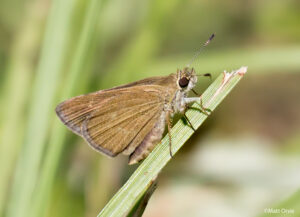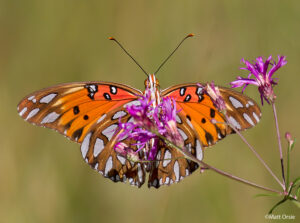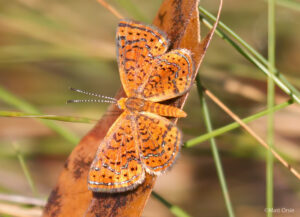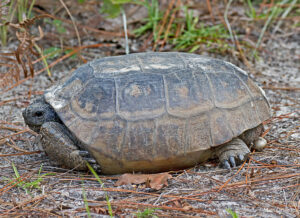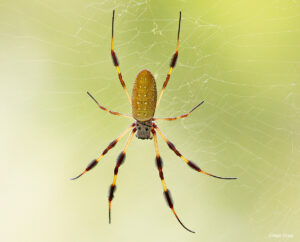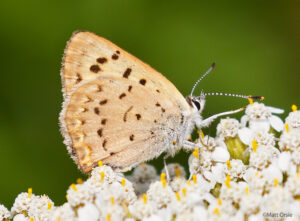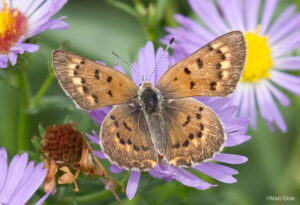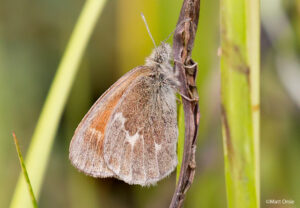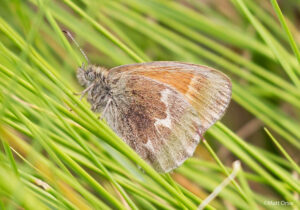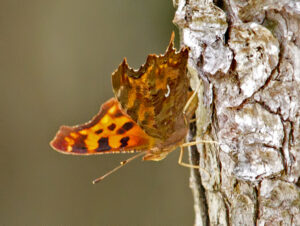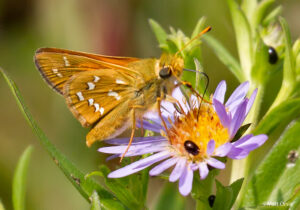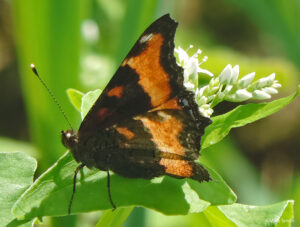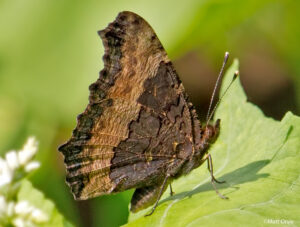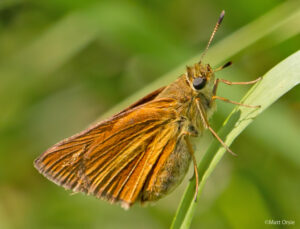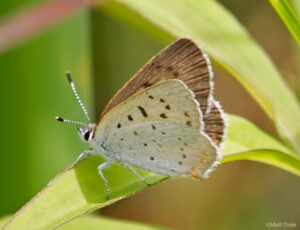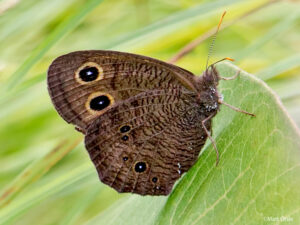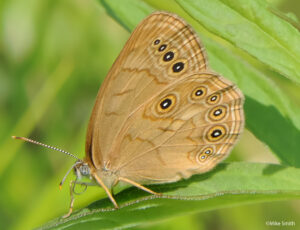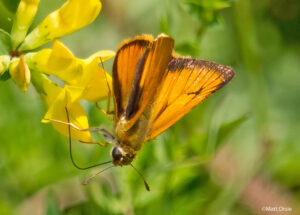No matter how much experience you have every once in a while nature throws you a curve ball and you say “what is that?”. Barry Marts, Sue Garvin and I had that experience while helping out on the recent Shenandoah National Park NABA count. We were assigned the mid-northern section of Skyline Drive. Nectoring sources were everywhere and although we found 24 species during the day, the numbers (save for Silver-spotted Skippers (744)) were low overall. Hayhurst’s Scallopwing was our highlight. While at the Pinnacle’s picnic area at 3,100 feet we found a hairstreak which had characteristics of Banded but the ventral forewing exhibited a “bleeding” effect like the scales weren’t dry and began to run down the forewing. We also noted an orange nudum on the antennae. When I got home I looked through various guides and sources and saw in the Butterflies of Pennsylvania field guide that it highlights a characteristic of Hickory Hairstreak as having an orange nudum (more noticeable in females). I sent one of the co-authors, Dr. David Wright an email with a photo and I include his response here. It appears we hit the Banded Hairstreak lottery finding a rare variation or perhaps a hybrid Banded/Hickory. The host for both types of butterflies was in the immediate area. I thought I’d post this in case others have seen this before or might see it the future.
I sent David this:
Hi David,
I know you can’t label them all and you shouldn’t try and I was about to throw this Hairstreak I photographed yesterday into that bucket until I started reading more in your “Butterflies of Pennsylvania” field guide.
Barry Marts, Sue Garvin and I were helping out on a count in Shenandoah National Park and we came across this Hairstreak yesterday in a picnic area at 3,100 ft elevation. We said Banded/Hickory as there is plenty of immediate host/habitat for both species. We’ve seen a zillion Banded’s over the years but the ventral forewing post-median band looked different from typical Banded’s. I know there is a lot of variation and the hindwing blue spot is pretty much gone except for perhaps the very tip which show a few scales of orange.
I started reading your descriptions and saw that you make it a point to highlight the antennae nudum as orange in both sexes to some degree in Hickory’s. I’ve not seen this characteristic pointed out in other field guides so wanted to get your opinion on this Hairstreak? I did look at some of my Banded photos from the past and only see dark nudum with perhaps a lighter tip on those.
Is this characteristic reliable?
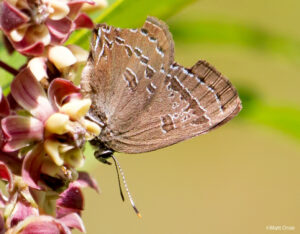
And he replied with this:
Hi Matt,
I believe your odd-looking hairstreak is an aberrant female Banded Hairstreak (Satyrium calanus). The overall pattern is most consistent with calanus, except for the orange nudum. The latter is an important character for Hickory Hairstreak (S. caryaevorum), particularly females. However, I have seen the orange nudum in calanus adults on very rare occasions in collections (about 1-2 per 1000 museum and private specimens). I have often wondered if this incidence (0.1-0.2%) represents calanus x caryaevorum hybrids.
The unnamed calanus aberration (inward bleeding of the VFW post-median bar) was featured in a short article in JLS in 1981. The fig. from that article is inserted below.
